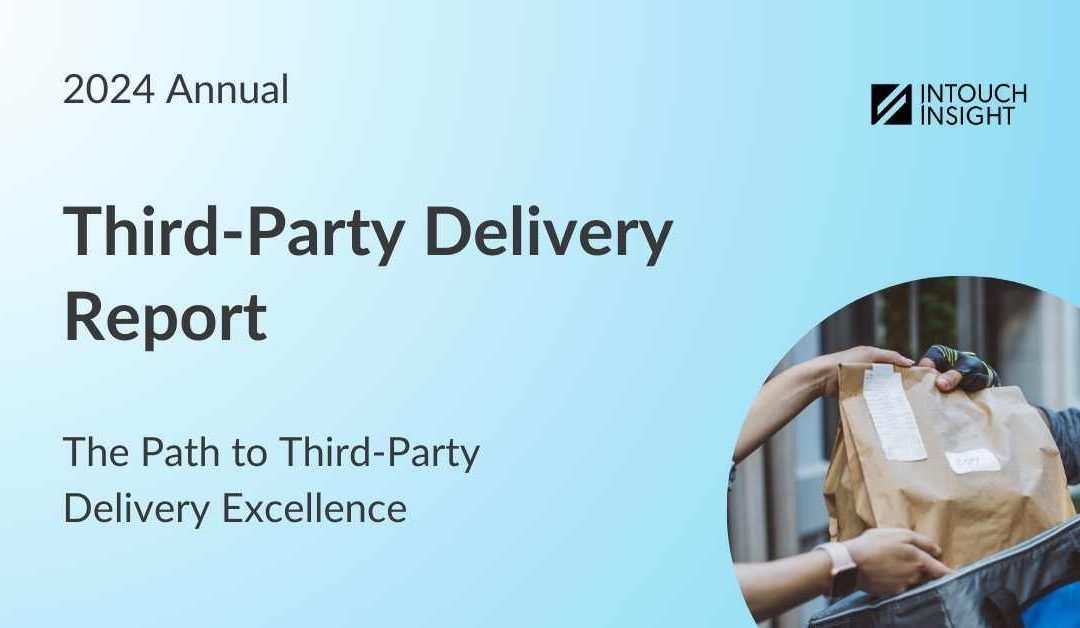In the race for top-performing third-party delivery provider, DoorDash is Noah Lyles, according to the Intouch Insight Third-Party Delivery Study. The study, produced in conjunction with Informa Connect, analyzed the performance of DoorDash, Grubhub, and Uber Eats across several metrics, including delivery speed, order accuracy, and customer satisfaction.
Intouch Insight, a leading customer experience solutions provider, placed 600 orders from across the United States, with each third-party delivery provider handling 200 orders. It discovered that the average delivery time across the platforms was 33 minutes and 24 seconds. But when you parse out the findings per provider, DoorDash was the fastest at 26 minutes and 24 seconds, much faster than Grubhub at 35 minutes and 49 seconds and Uber Eats at 38 minutes and four seconds.
Speed matters
But when you look at how providers delivered on estimated-delivery expectations, it’s Grubhub that tops the field: it delivered early to consumers 63 percent of the time, DoorDash 56 percent of the time, and Uber Eats 48 percent of the time. On the other end of that rating, Uber Eats delivered late 44 percent of the time, DoorDash 38 percent of the time, Grubhub 35 percent of the time.
Uber Eats clearly has some work to do in improving speed.
A positive trend for consumers is that the average delivery fee across the three apps is trending down. In this survey it was $5.96. This is 15 percent less than the findings from a similar study Intouch Insight conducted in 2022.
Looking at the big picture, the consumer love affair with delivery remains rom-com level. In the 2022 study overall satisfaction was 87 percent. This year it is 91 percent. The U.S. online food-delivery industry is projected to reach 193 million users by 2029. Bet on that happening.
One curious insight from the study was the analysis of the time of day when customer satisfaction and order accuracy dipped. Those metrics were lowest in the afternoon, between 1:31 p.m. and 4 p.m. Note to consumers: if you’re looking for a mid-afternoon snack, expect to need a snack while you wait for your snack.
Indie vs. chain delivery
There’s also a fascinating distinction on the delivery experience based on proprietor: 91 percent of consumers expressed satisfaction when ordering from independent restaurants, 84 percent for chain restaurants, and 80 percent for convenience stores. A logical explanation may be in the difference between indies and chains in their markup averages: indies charge an average of $1.25 more for delivery, the chains bring that up to $1.90. Plus drivers might hustle a bit more when delivering from indies, as consumers may tip more for those orders. Consumers often put a premium on keeping things local.
While convenience stores are pulling up the rear in satisfaction compared to restaurant brands, the fact that they’re even in the game is noteworthy. Their presence may continue to grow in the years to come.

Cameron Watt of Intouch Insight
“Customers now have almost limitless options at their fingertips, so understanding the strengths and weaknesses of third-party providers will be critical to ensure that restaurant brands are able to meet and exceed expectations,” said Cameron Watt, president and CEO of Intouch Insight, in a statement.
To take a line from presidential State of the Union addresses, the State of the Delivery Industry is strong. Food temperature scores are 5 percentage points higher than the 2022 survey. Ease of placing an order is 1 percentage point higher. If there is a concern for providers, it would be in order accuracy. That stayed the same from 2022, at 90 percent satisfaction. Ninety percent isn’t bad. That would be an A in the classroom. But wouldn’t an A+ be better?



